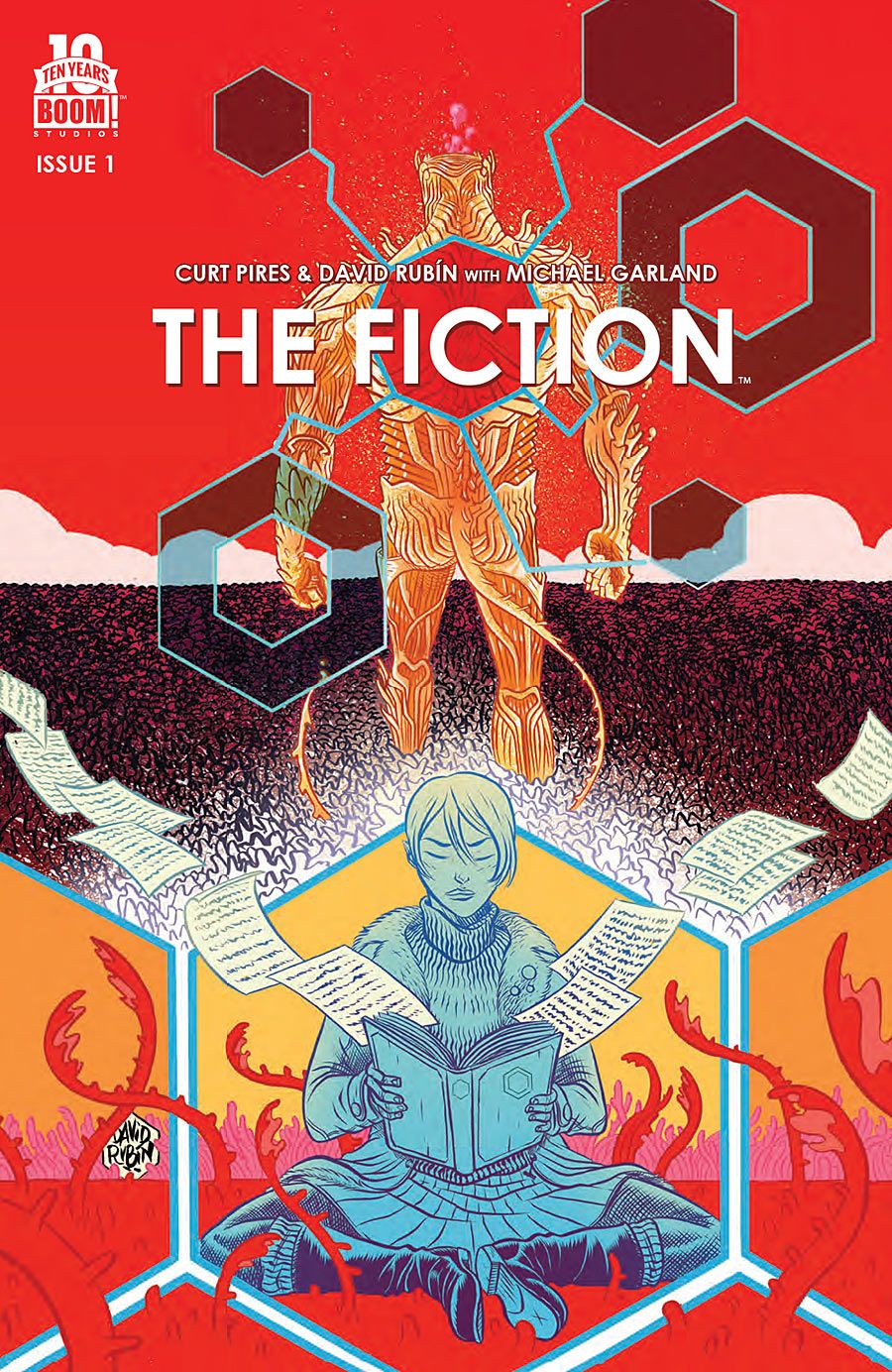In "The Fiction" #1 by Curt Pires and David RubÃn, a book is a portal to both magic and horror when one person in a group of four friends disappears in childhood and, fifteen years later, another one also vanishes.
This debut issue follows four children who discover a way into a magical faraway land and grow up in a world of wonder and power. Sounds familiar, right? C.S. Lewis' "The Chronicles of Narnia" is the obvious reference. "The Fiction" also shares ground with fellow postmodern, second generation meta-narratives like Lev Grossman's "The Magician," a fantasy saga that is in part an exploration and commentary on Narnia. Within the comics medium, "The Fiction" is akin to Mike Carey and Peter Gross' "The Unwritten," which takes the world of "Harry Potter" as its starting point. "The Fiction" also has echoes of Joe Hill and Gabriel Rodriguez's "Locke and Key," a dark tale of misused magical power, in which the sins of parents must be paid by their children.
Like its contemporaries, Pires' story is about the power of the written word and the corrupting influence of the adult world. It is a dark reworking of the Narnia premise, but the key is always the same book. The book itself is a potent plot device. Like Fate, it is irresistible, like Destiny's book in Neil Gaiman's "Sandman."
Despite the heavy baggage and high bar set by its progenitor and its competition, "The Fiction" #1 has a clear, strong voice. All the elements are derivative, but the reading experience doesn't feel stale. The first scene is a paragon of concise, suspense-building exposition. In only two pages, Pires and RubÃn introduce one of the main characters, hook the reader and get the wheels of the plot spinning without any information dumping.
The flashback and the return to current-day event have a predictable progression, but the pacing is steady and there isn't a single boring page. Pires leaves a lot of the details of the setting shifts and characters' personalities to RubÃn's art.
RubÃn's linework is reminiscent of Peter Gross' style, but his line is curvier and his faces and bodies more fluid. He is comfortable with drawing the normal world as well as the fantastical, and his transitions are very smooth and clear. No captions are needed for the time and setting jumps. He captures narrative subtleties in his facial expressions and body language, indicating when a character's feelings don't completely line up with what he says. His work conveys emotions without veering into melodrama. My only nitpick is that his work is too stylized in the tense conversation between Kassie and Max; Kassie's hands look flattened and too long, and these exaggerated proportions distract from the dialogue.
Michael Garland's colors add flair and intensity to first scene, and his faded, lemon-yellow backgrounds give the sky a cozy, nostalgic air in the first flashback, especially in the Max's flashback, which is shaded by halftone-dots like an old comic strip. Throughout, he guides shifts in mood, from a jubilant bright hue for the discovery of magic to the pale, cold neons of Kassie and Max's adult lives.
"The Fiction" #1 is an exceptionally strong debut. Four characters have some definition by the end of "The Fiction" #1, both as adults and as children. Groundwork has been laid for several mysteries, including the question of how the older generation fits into the plot. The atmosphere of the first flashback scene was thick with hints of discord and evil. The power of storytelling and the long shadow of guilt are ambitious, powerful themes, but Pires, RubÃn and Garland supply enough creative juice to do them justice so far.

